Is the Royal Ballet a “Balanchine company”? The question was posed at a recent Insight evening to Patricia Neary, the tireless dancer who has helped keep the choreographer’s legacy intact since his death in 1983 and a living link with his teaching. Neary has been working with the RB as a coach, advisor and stager of Balanchine’s work for the past 57 years. “Oh yes!” was her emphatic answer.
Neary, who didn’t even hang up her pointe shoes until she was 70, has now decided to spend more time with her husband in Los Angeles. In its new all-Balanchine triple bill, the company shows how thoroughly it has ingested her teaching. The three items are a proving ground of all the skills required in this work: speed, control, precision, musicality.
The precision gets a full workout in the first item, Serenade (1935), announced by the rich, magisterial chords of Tchaikovsky’s Serenade for Strings playing over a tableau of women in long, pale gauzy dresses. They stand in serried rows against a vivid blue background, each with a right arm raised, the hand positioned as if holding something in check. Slowly they move their hands to their heads, then through from first position to fifth. It’s as is the participants of a classical “white scene” have gone back to the barre they trained at. Then they pulse, a small bounce with outstretched arms, perfectly in time to the music.
This synchronicity is key to performing Balanchine well. A concert pianist himself, his work shows a deep understanding of the components of a score. Each gesture of the music is mirrored in a physical one. Arms flash out timed to punctuating chords; the soloists – on opening night Melissa Hamilton, Lauren Cuthbertson (pictured below right with William Bracewell) and Mayara Magri, who variously partnered William Bracewell, plus Ryoichi Hirano in the final section, all excellent – must be perfectly in sync with the music and each other, even in the moment where Magri appears to fluff, an error made by a dancer in the piece’s original rehearsals at the American School of Ballet that Balanchine kept in the choreography.
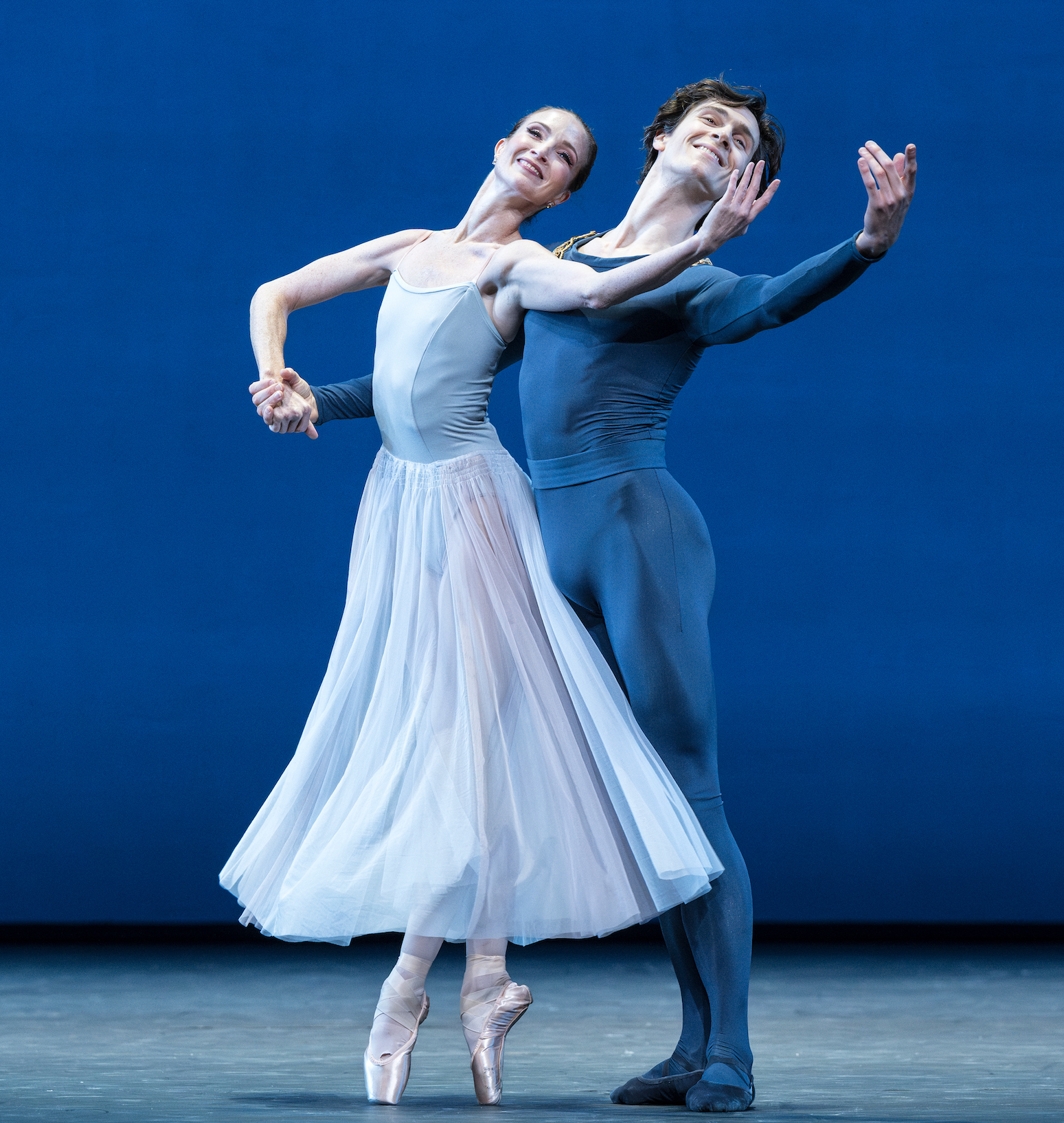 The piece moves through a waltz section to the slower pace of the finale, in which a new male soloist (Hirano) appears, and all the women have loosened their hair. Hirano enters with Hamilton walking clamped to his back, limpet-like; he exits with Magri attached to the front of him as well, leaving Cuthbertson alone and prostrate, until she is borne out by a trio of men. (Is this Balanchine depicting the key players in his love life – the wife, abandoned for the mistress and the wannabe – at the time? Neary seems to think so.) There’s a poignancy to these final moments, yet Cuthbertson leaves like a triumphal trophy. It’s deeply felt romanticism, for all the wit of some of the steps.
The piece moves through a waltz section to the slower pace of the finale, in which a new male soloist (Hirano) appears, and all the women have loosened their hair. Hirano enters with Hamilton walking clamped to his back, limpet-like; he exits with Magri attached to the front of him as well, leaving Cuthbertson alone and prostrate, until she is borne out by a trio of men. (Is this Balanchine depicting the key players in his love life – the wife, abandoned for the mistress and the wannabe – at the time? Neary seems to think so.) There’s a poignancy to these final moments, yet Cuthbertson leaves like a triumphal trophy. It’s deeply felt romanticism, for all the wit of some of the steps.
Sandwiched between the two neo-classical items is an earlier piece Balanchine created in 1929 for Diaghilev’s Ballets Russes, Prodigal Son, to Prokofiev. This was a vehicle for Carlos Acosta and, as the Siren who seduces and robs him, Sylvie Guillem, in previous RB runs. It is an unusual narrative ballet from Balanchine, based on a stripped down version of the biblical story. For the backcloths, Georges Rouault was employed, his spare but thick black brushstrokes offering an expressionist take. Otherwise the stage is sparely furnished. To one side is a tent, the Prodigal Son’s home, from which he flees for new horizons, with a multi-purpose fence serving as a bench and then, upended, as a monolith against which the robbed Prodigal Son is posed, stripped down to his underwear. Cesar Corrales (pictured below) threw himself impressively into this bravura role, which sees him move from ebullient to crippled, dragging himself home in rags with the aid of a staff. The moment where he goes to his father for acceptance and hangs from his neck like a small child is surprisingly touching.
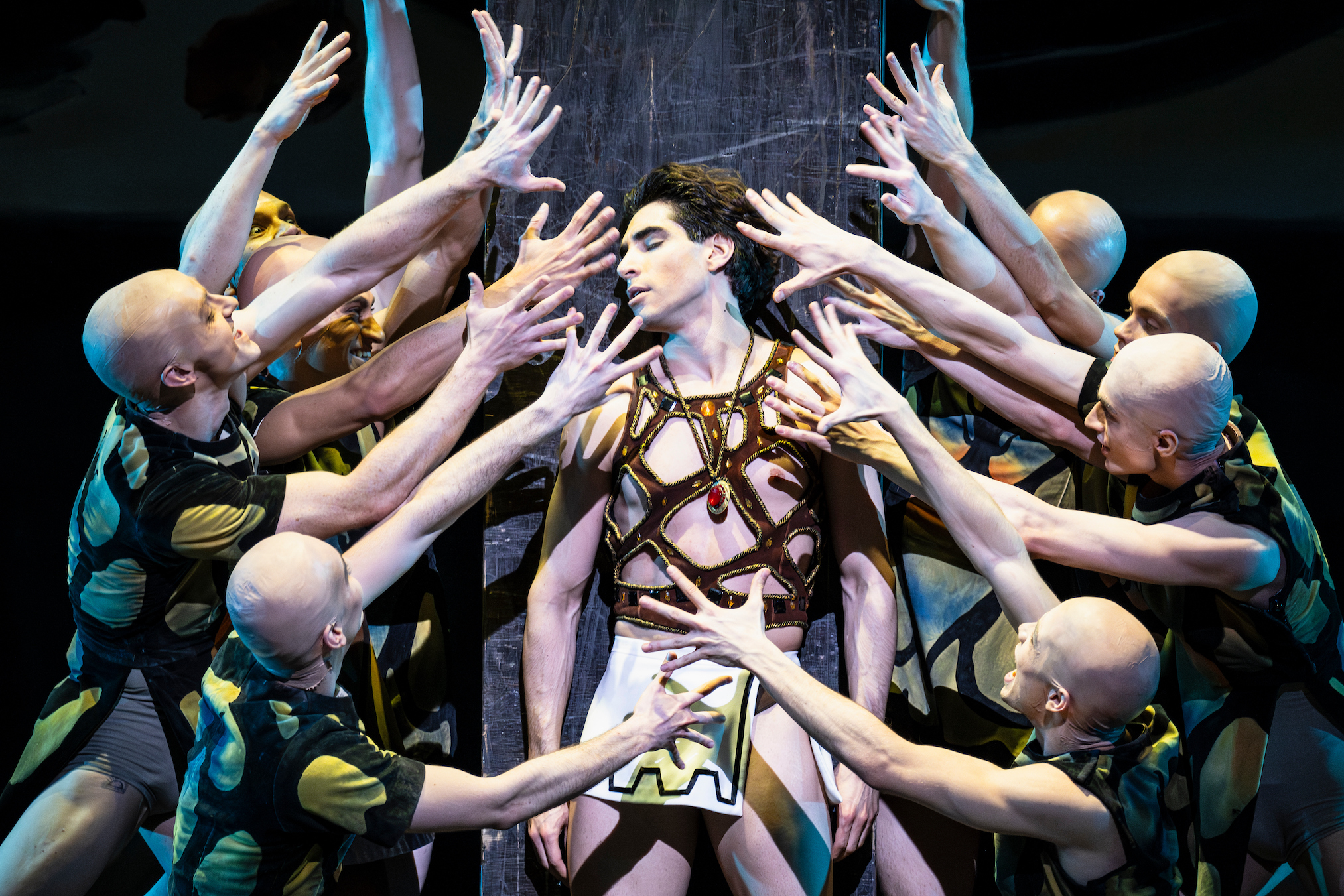 The main, middle section of the piece depicts the Prodigal’s arrival in an alien land populated by grotesque bald creatures who pimp-roll like a drunken sailor’s hornpipe, toes upturned, splayed hands waving. (Was Balanchine trying to outdo Nijinsky’s jazz-handed creatures in The Rite of Spring?) They serve a woman in a tall head-dress and not much else, who winds and unwinds her long red train around her torso and legs. On opening night, Natalia Osipova brought her striking physique to the role, executing the sometimes shockingly explicit moves with relish. She writhed like a giant snake, making little pelvis thrusts and at one point pinning Corrales to her with one leg around his, a sort of simulated copulation, all the while eyeing up the jewel around his neck. But the Siren’s customary allure was missing.
The main, middle section of the piece depicts the Prodigal’s arrival in an alien land populated by grotesque bald creatures who pimp-roll like a drunken sailor’s hornpipe, toes upturned, splayed hands waving. (Was Balanchine trying to outdo Nijinsky’s jazz-handed creatures in The Rite of Spring?) They serve a woman in a tall head-dress and not much else, who winds and unwinds her long red train around her torso and legs. On opening night, Natalia Osipova brought her striking physique to the role, executing the sometimes shockingly explicit moves with relish. She writhed like a giant snake, making little pelvis thrusts and at one point pinning Corrales to her with one leg around his, a sort of simulated copulation, all the while eyeing up the jewel around his neck. But the Siren’s customary allure was missing.
In the triumphant final item, Symphony in C (1947), Balanchine’s musicality is on full beam, and the company went full tilt to do this masterly crowd-pleaser justice. It’s like watching the score translated into a kinetic 3D image. The corps are as busy as the soloists, their steps providing the basic rhythms of the music, while the soloists add balletic flourishes that are the equivalents of the music’s toplines. By the time the busy strings in the finale arrive, all the dancers are lined up in rows, mirroring their scampering sounds with perfectly executed jumps and spins. It’s exhilarating to watch. 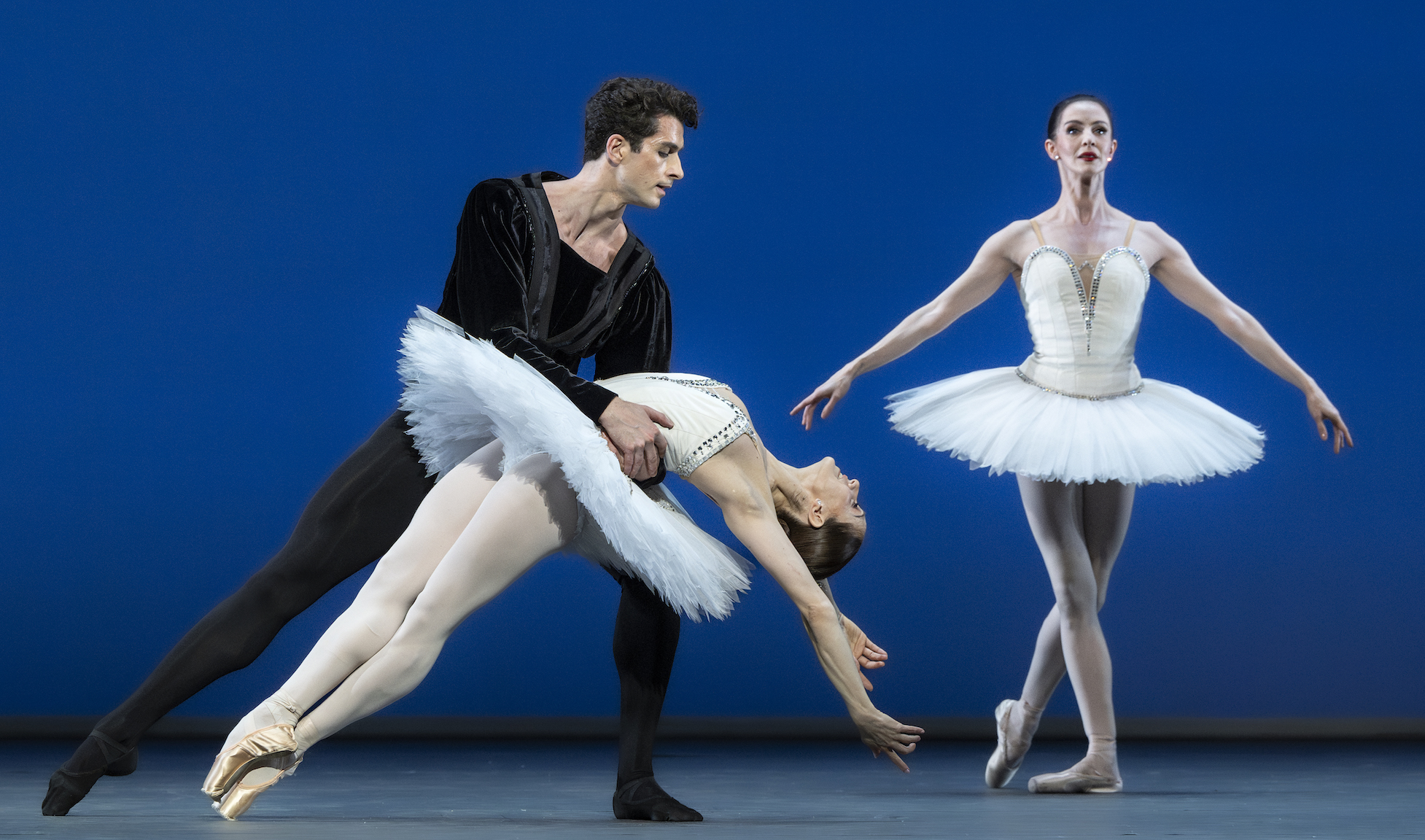 More fine soloists were fielded on opening night, from a commanding Joseph Sissens to a cheekily flirtatious Fumi Kaneko and a spirited Vadim Muntagirov, back from injury. Marianela Núñez (pictured above with Reece Clarke and Olivia Cowley) demonstrated again, after her astonishing unmoored Juliet with Bracewell in the current run, that she has never danced better. In the adagio movement here, her ability to control each gorgeous line, especially her backwards swoons, artfully caught by partner Reece Clarke just when you feared he wouldn’t make it, was moving as well as heart-stopping. All the performers, as she did, radiated a palpable joy at dancing these wonderful pieces.
More fine soloists were fielded on opening night, from a commanding Joseph Sissens to a cheekily flirtatious Fumi Kaneko and a spirited Vadim Muntagirov, back from injury. Marianela Núñez (pictured above with Reece Clarke and Olivia Cowley) demonstrated again, after her astonishing unmoored Juliet with Bracewell in the current run, that she has never danced better. In the adagio movement here, her ability to control each gorgeous line, especially her backwards swoons, artfully caught by partner Reece Clarke just when you feared he wouldn’t make it, was moving as well as heart-stopping. All the performers, as she did, radiated a palpable joy at dancing these wonderful pieces.

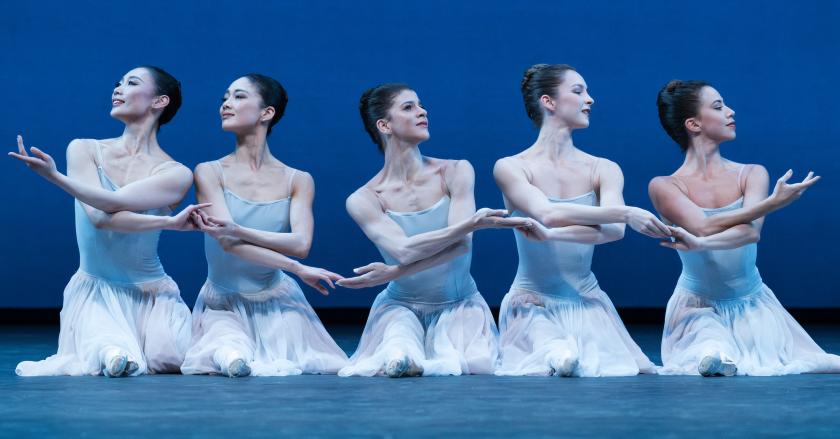


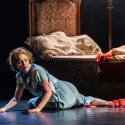









Add comment